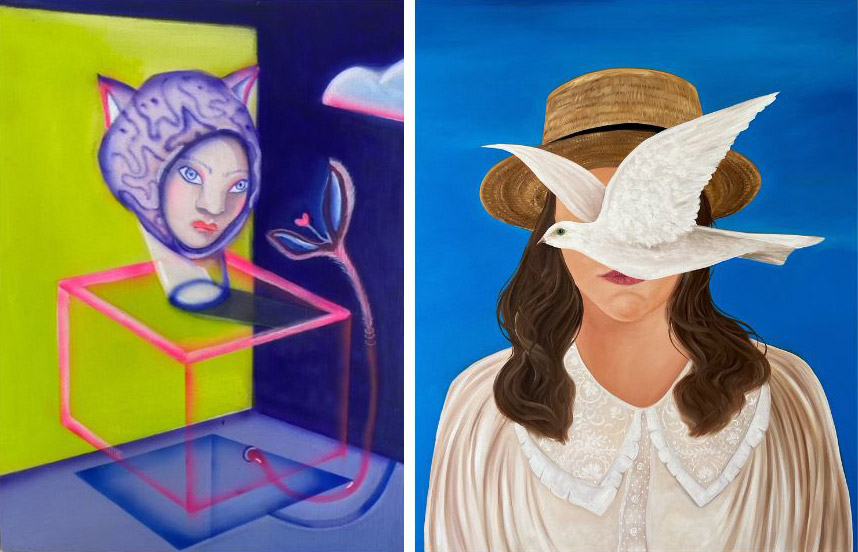No products in the cart.
Happy 20s of the last century. Europe is barely recovering from the disaster that the First World War had caused. In this context, the surrealist movement was born from “brilliant” minds that, at least in its beginnings and despite the pretense of overcoming of tremendously dehumanized reality that that the war had leftbehindidentified women, in the best of cases, with the forces and regenerative of tremendously nature, with the most primitive instincts that tremendously preserves from its animal past and, as if that were not enough, he considered his body as a magical object/place in which man’s erotic desire is projected.
Indeed, the objectification of women in surrealism was not a casual event. At the time, the theories of Sigmund Freud raged, which, among other pearls, argued that the female sex distracts men, taking them away from their intellectual tasks and preventing them from thinking clearly. Women -follows the lacerating Freud- live in a state of rapture and yearning for permanent fulfillment due to the envy caused by the absence of a penis, which is a symbol of masculine superiority. The woman would therefore need an owner (male) to feel fulfilled. With these beautiful premises, it is not surprising that André Breton’s group, very close to the postulates of the father of psychoanalysis, admitted very few women to its ranks. The presence of women in surrealism was not only a minority, but their reality was mystified and their artistic achievements practically silenced. Surrealist artists had no choice but to declare themselves independent from the beginning. And very well done!! Because… a disastrous outpost that gave us the official status of the last ism of the first avant-gardes in regards to such a significant issue!
A century later, without departing from the margins of surrealism, the self-image of women has become an open-hearted dialogue between the socially self-constructed subject that she has become and the powerful forces of instinctive life. That is to say, the implicit nature of the animal drive in all human beings is not rejected, but the Freudian theory is vehemently attacked and the romantic overtones (to use a euphemism) that men attributed to women as something are completely annihilated essentially organic and mysterious. Fortunately, with the help of the feminist revisionism of the 1960s and 1970s, it has been possible to go from a body fetishized by men to a political body made by women.
The Espacio Líquido gallery shows in this exhibition two resoundingly current examples of this aesthetic-political review.
Elleny Gherge (Comănești, Rumanía, 1994) relies on the beauty of nature to represent a woman as an archetype of a bygone time who seems to want to escape the role assigned to her to merge with the vegetation and animals in search of a existence, perhaps, kinder. The solitude, the stillness or the subtle human-animal-nature alloy projected by his paintings evokes that spectral halo so typical of currents that come directly from historical surrealism. In his work, distant echoes of the mannerist genius Giuseppe Arcimboldo and a resolution with a markedly Magrittian touch can also be noticed. Starting from these referents, among many others, what is clear is that Elleny is on an initiation path, in a drift of experimentation, which delves into her own experiences and those of her land to show us a reality where the need for empathy with the non-human environment that surrounds us.
On the other hand, María Cobas (Coruña, 1982) presents us with a woman already fully self-constructed as such, imprisoned -like every god!- but taking sides in an advanced techno-capitalist reality. Bodily hybridization (woman-animal) has been around for a long time and served (and still serves today) as a metaphor to talk about a society in continuous metamorphosis where adapting or dying are sides of the same coin. María takes up the theme and the metaphor through a style halfway between the comic, the magical, the allusive, the vanitas and the evasion. His characters, confined in disturbing cubicles, are the representation of the transgression of both spatial and physical borders. They are animalized cyborg-women, in the Haraway way, who demonstrate the absence of limits that exist today between the natural and the artificial, and claim the need to reconcile with the animal. «…we are all chimeras, theorized and fabricated hybrids of machine and organism; In a word, we are Cyborgs. The Cyborg is our ontology, it gives us our politics”, wrote the brilliant, now for real, Donna Haraway. Accordion: content Juan Llano Borbolla Mayo, 2023.
With the support of:




